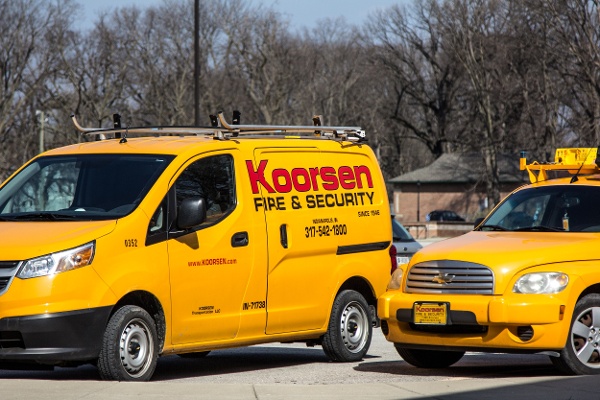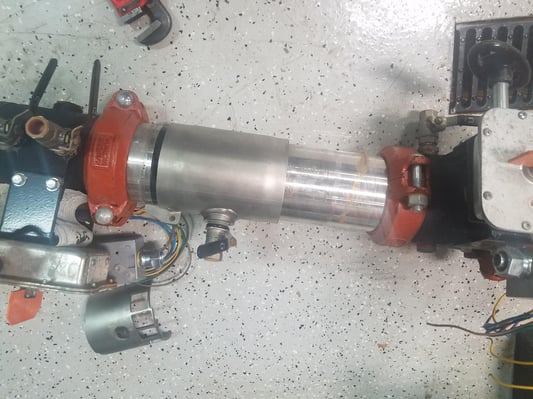
Fire sprinklers are complex systems ingeniously designed to protect life and property from a fire. But the complexity of their mechanisms, as well as the fact that they are connected with the municipal water supply poses some unique challenges.
One of these challenges is the dangers of backflow and the need for a properly functioning backflow prevention assembly system.
What is a Backflow Prevention?
Before you can understand the importance of preventing backflow and why backflow prevention systems need to be tested, you must first know what backflow is.
- What is Backflow in Fire Sprinkler Systems?
A fire sprinkler system connects into a cross-contamination system, which is where water from various clean sources connects with contaminated or polluted water sources. For example, when a domestic irrigation or fire sprinkler system connects with a public water source, there is a cross-contamination system connecting them.
The water in a fire sprinkler system, as well as most potable water systems, is designed to maintain a constant level of pressure to ensure that it is ready to flow efficiently whether out of fire sprinklers, faucets, hoses, etc.
Backflow occurs when water pressure unexpectedly changes or drops in the municipal water supply. This allows a reverse flow of water from a contaminated water source into the clean, potable water.
So, for example, if the municipal water supply suddenly lost its water pressure, water from the contaminated fire sprinkler system could backflow into the municipality’s drinking water.
- What is Backflow Prevention?
Backflow prevention, then, is the use of a backflow prevention valve to prevent backflow in the event of dropped or failed water pressure. The backflow prevention valve can be installed in the fire sprinkler piping where there is risk of contaminated water in the sprinkler system flowing back into the municipal water supply should water pressure drop.
So, essentially, backflow prevention is the prevention of clean water in one system, in this case the municipality’s drinking water supply, from being contaminated by dirty water in the fire sprinkler system.
 |
| Disassembled Backflow Prevention Assembly System |
Why Does It Need to be Tested?
Hopefully, it is readily apparent why a backflow prevention assembly system in your fire sprinkler system is important and why it needs to be tested regularly to ensure that it is functioning properly.
It is vital that a municipality’s drinking water be clean, potable water to ensure there are no health risks to those exposed to the water. If the drinking water supply were to be contaminated by backflow from a business’s fire sprinkler system, it could endanger the health of those drinking from the water supply.
A proper backflow prevention system ensures that clean water is kept clean and health risks are avoided. It is for these very important reasons that the NFPA (National Fire Protection Agency) and local jurisdictions require backflow prevention measures and require that they be inspected and tested regularly.
What are the Inspection and Testing Requirements?
First, as an important reminder, it is a combination of the NFPA, your local AHJ (Authority Having Jurisdiction – often the local fire marshal), and your insurance company that dictate regulations for safety standards and testing.
Thus, it is important when getting your fire protection systems installed and tested that you work with a company who knows ALL of the regulations, including the unique ones of your local authority.
- NFPA and Backflow Prevention
Over the years, the NFPA has adjusted its regulations for backflow prevention, and in more recent versions of NFPA 25 (2011 edition), the standard actually requires annual testing of the forward flow within the pipes, rather than requiring a test of the backflow prevention mechanisms. The current standard calls for forward flow testing at the system’s designed flow rate on an annual basis.
In previous editions of NFPA 25, however, the standard did call for a reverse flow test on an annual basis to test the backflow preventers to ensure they did actually prevent backflow.
While more recent editions of NFPA 25 no longer call for the reverse flow test, they do still indicate that a performance test of the backflow preventer should be performed on an annual basis as required by the local AHJ. Thus, a part of the reason why the NFPA does not currently require it directly is due to the assumption that local authorities will handle it.
- Local AHJ and Backflow Prevention
While every local area and state will have their own regulations, in general, backflow prevention systems must undergo annual testing by qualified professionals when they are connected to a fire sprinkler system.
Your local authority, when performing inspections, will be inspecting to make sure you have a backflow prevention system in place in your fire sprinkler system and that it functions properly. So, you will want to be sure to work with a qualified, professional fire protection agency when you get your system installed and tested.
Besides the NFPA and your local authority, your insurance company may also have standards dictating the type, installation, maintenance and testing of backflow prevention assemblies on your fire sprinkler system. Be sure to closely read your policy and speak with your insurance company to know what you are responsible for.
Need Help?
Fire protection systems are complex. Fire sprinkler systems and the water they contain, because they are typically cross-connected through the plumbing to municipal water sources, pose a unique threat if they are not properly protected with efficient backflow prevention.
With so many institutions playing a role in dictating the regulations and standards which you must adhere to, you need a fire protection agency that you can trust to install, maintain, and inspect your system.
Koorsen Fire & Security has been in the fire protection industry for over 70 years. They are experts in both the standards and in the systems that protect your business from fire and related hazards. For something as important as your fire sprinkler system and backflow prevention assembly, put your trust in their experienced and expert hands.
Contact them today to learn more and schedule your backflow and sprinkler system’s next inspection.


